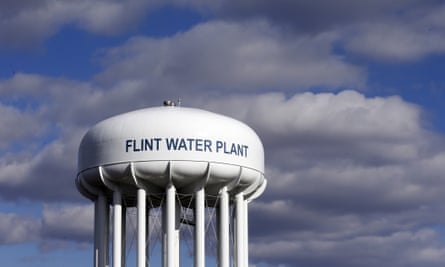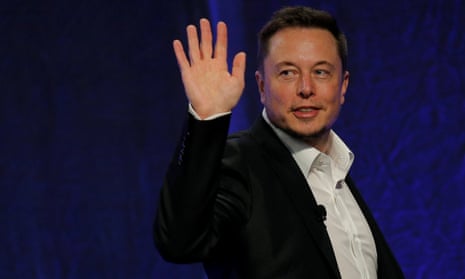The entire website of Elon Musk’s private charitable foundation is shorter than many of the Tesla CEO’s contentious tweets. “Musk Foundation. Grants are made in support of: Renewable energy research and advocacy; Human space exploration research and advocacy; Pediatric research; Science and engineering education,” the site reads.
Documents obtained by the Guardian reveal how the foundation has put that vague mission statement into practice. Together, the documents show that many of the organization’s donations have gone far beyond its stated scope. Some have benefited the billionaire’s own initiatives and, indirectly, his family, while others have tackled his pet peeves – the foundation has given more money to artificial intelligence research than to any of the more traditional charities it says it supports.

As with many other of his achievements, Musk has publicly touted his charitable activities, whether during the Flint water crisis or amid international efforts to rescue a young soccer team trapped in a Thai cave. Musk has given personally to multiple causes and organizations, including multimillion-dollar donations to the Sierra Club and the XPrize Foundation, and a $1m grant to the Obama Foundation. But the bulk of his charitable giving has been through this private foundation, for which he provides the entirety of its funding.
The Musk Foundation has disbursed more than $54m in 15 years of operations, more than a third in direct gifts to 160 charities, according to an analysis of filings with the Internal Revenue Services from its incorporation in 2001 to the middle of 2017. Most recorded awards totalled just a few thousand dollars, and many went to environmental, educational, medical and space advocacy organizations.
Others, however, landed closer to home. Recipients have included a school attended by Musk’s own children, a charity managed by his brother, a protest group fighting gridlock on Musk’s commute to SpaceX, and even an art project at Musk’s favorite festival, Burning Man.

Giving it all away
In 2012, Musk joined billionaires like Michael Bloomberg and Warren Buffett in signing The Giving Pledge, a commitment by some of the world’s richest individuals to give away the majority of their wealth, either during their lifetimes or upon their deaths. Musk – who controls Tesla, SpaceX and The Boring Company – is worth an estimated $22bn, although almost all his wealth is tied up in his own companies.
Musk had started organizing his charity givings more than a decade earlier.
Musk launched his foundation in 2001, together with his younger brother Kimbal, who would serve as the organization’s secretary and treasurer. Musk’s first big gift to the foundation came the following year, shortly after eBay bought PayPal, the payments company that Musk had an interest in. Musk gave his organization 30,000 eBay shares, worth $2.1m.

In those early days, the foundation made small, uncontroversial donations to Musk’s alma maters in South Africa and the US, to other educational charities, space societies and children’s hospitals such as the Seattle Children’s Hospital and the Children’s Hospital of Los Angeles.
Between 2007 and 2014, Musk topped up the foundation’s coffers with a little over $3.1m in cash. The list of its recipients grew longer – and began to feature more organizations with links to Musk’s own family and interests.
The foundation funded photovoltaic systems helping communities affected by the Deepwater Horizon disaster in 2010 and the Fukushima earthquake in 2011. Musk’s solar power company Solar City (now part of Tesla) participated in both installations.
Also in 2010, the foundation spent $183,000 to help launch Kitchen Community, a Colorado-based charity headed by Kimbal that used “learning gardens” in underserved areas to help children grow and prepare fresh food. Kitchen Community, now called Big Green, has raised over $47m since its inception. It received a total of nearly half a million dollars over the next four years from the Musk Foundation – one of the foundation’s largest direct awards at the time.
As executive director and chairman of the project, Kimbal received nearly $85,000 in payments by Big Green between 2010 and 2016.
The organization did not initially respond to a request for comment. Following publication of this article, a spokesman for the charity said Kimbal personally donated $130,000 to Big Green. The Kitchen Restaurant Group, a family of restaurants primarily owned by Kimbal, donated hundreds of thousands of dollars to the organization, the spokesman added.
Between 2011 and 2013, the foundation also made two $50,000 donations to the Mirman school for gifted children in Los Angeles, a school that Elon Musk’s sons were attending at the time. Musk later started his own not-for-profit school, Ad Astra, located within SpaceX headquarters in Hawthorne, California, which his children now attend.
In 2012, the year Musk signed the giving pledge, the foundation expanded its horizons and donated to the Rock and Roll Hall of Fame, the Los Angeles Police Foundation, and a not-for-profit organization for professional women in New York’s film, television and digital media industries.
It also made three $25,000 payments to a tiny pressure group called Angelenos Against Gridlock. The group was lobbying for improvements to the notoriously congested Interstate 405 highway that Musk uses regularly to commute from his Bel-Air home to SpaceX. Angelenos Against Gridlock is now defunct, and Musk has turned his attention to building tunnels to whisk Tesla electric cars swiftly beneath the city’s traffic instead.

The high point of 2012 was possibly a $10,000 donation to the Multidisciplinary Association for Psychedelic Studies (Maps), a non-profit that is developing medical therapies using marijuana and MDMA. That donation helped fund the Temple of Whollyness, a large wooden art structure that went up in smoke at the climax of 2013’s Burning Man festival in Nevada.
Fighting the AI demon
By mid 2015, the Musk Foundation was down to its last $60,000. The following May, Musk donated 1.2m shares of Tesla Motors, valued at nearly $255m at the time.
The huge influx of funds came with its own issues. Tax rules state that private foundations must distribute 5% of their assets each year. The Musk Foundation suddenly had to find a home for millions of dollars. Musk turned to one of his passions, and his connections in Silicon Valley.
Musk has long worried about the possibilities of superhuman, malevolent artificial intelligence, likening it to “summoning the demon”. In 2015, he had pledged $1bn to a set up a research company called OpenAI that would develop safer AI in a “way that is most likely to benefit humanity as a whole”.
“Elon’s charitable giving has kickstarted AI safety research, transforming it into what is now a vibrant and respectable research area,” said Max Tegmark, a professor at the Massachusetts Institute of Technology, who personally received $9m from Musk for research at the Future of Life Institute.
But in 2016, the IRS was still processing OpenAI’s non-profit status, making it impossible for the organization to receive charitable donations. Instead, the Musk Foundation gave $10m to another young charity, YC.org. The charity lacks a website or social media presence but its stated aim is “making grants to other 501(c)3 initiatives and activities that are trying to solve the world’s problems”.
Filings show the organization is run by Sam Altman, a director of OpenAI and the president of Y Combinator, a Silicon Valley accelerator that has helped to launch hundreds of technology startups, including Airbnb, Cruise Automation and Dropbox. Altman is also a director of OpenAI.

The Musk Foundation’s grant accounted for the majority of YC.org’s revenue, and almost all of its own funding, when it passed along $10m to OpenAI later that year. Open AI’s tax filings show its top researcher alone was paid $1.9m in 2016. Though that’s not out of line with what some top AI researchers make, it’s more than the Musk Foundation handed out to all other charitable causes during its first eight years of operation.
Also in 2016, the Musk Foundation made its largest disbursement to date, giving $37.8m to Vanguard Charitable. It’s a donor-advised fund – a tax-efficient giving vehicle that holds money on behalf of multiple clients and distributes it over time. This type of structure makes it difficult for the public to tell which client is making which awards, a benefit for the publicity-shy.

While secrecy was not Musk’s motivation for using donor-advised funds, he does believe that true philanthropy is done for the most part anonymously, a spokesperson for the foundation told the Guardian.
There are some hints that the foundation could be returning to grassroots giving. Last summer, Musk tweeted that he would help address the public health crisis in Flint, Michigan. The foundation said that it has donated more than $1m worth of water filtration equipment and laptops to causes in the city. But, if Musk continues to use Vanguard, it would make his already secretive foundation even less transparent in future years.
Within the law
Neither Elon nor Kimbal has ever accepted any compensation for their work with the foundation, nor are there any other salaried staff at the organization, filings indicate.
None of Musk’s charitable decisions are particularly uncommon for a billionaire’s private foundation, said Harvey Dale, director of the National Center on Philanthropy and the Law at New York University. Many wealthy individuals fund their children’s schools, and support their own charities and initiatives, he explained.
Even the foundation giving money to Big Green, which in turn paid Kimbal, may not be problematic. The Musk Foundation noted that Elon Musk has no involvement in Big Green and was unaware of any payments to Kimbal. It also said that those payments ended as soon as the Foundation learned about them.
It’s not against the law Dale noted. “As [the brother’s] salary at the charity was relatively modest, and the charity has plenty of other resources, you might come to the conclusion that the foundation’s contribution wasn’t responsible for any special benefit for him.”
On Wednesday, the foundation added aline to its website, stating its support for the “development of safe artificial intelligence to benefit humanity”.
This article was updated on 23 January 2019 with comment from Big Green and to clarify language about the Musk Foundation’s spending priorities.
